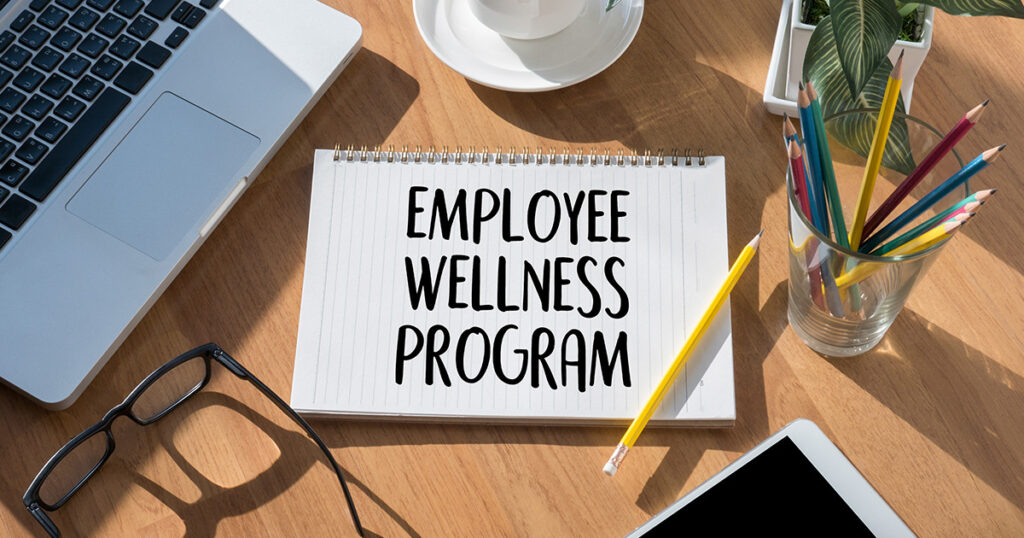Meetings are a routine part of work life. Staff and managers meet for multiple purposes. It could be to discuss existing or future projects, brainstorm for some problem, or get feedback from other departments.
In-person interactions and direct communication are important to building a good workplace environment and maintaining the targeted workplace culture. When done effectively, meetings also help to build stronger relationships among colleagues.
There are just two problems with meetings. First of all, traditional meetings are not very good for our health. They usually require sitting around a table, indoors, and under artificial light. Anything that prolongs our sitting still is bad for our health.
Have you ever found yourself zoning out in a meeting, eyes glazing over as someone drones on? Or felt the afternoon slump hit hard, making it challenging to stay focused during yet another conference room discussion.
This is the second problem with meetings. Traditional meetings are not always the most effective way of discussing an issue or finding a solution. This is because attendees can become tired and bored if they go on too long (and they usually do).
People in such meetings can disengage from what’s being said, and they usually leave feeling that very little has been decided or achieved.
If these scenarios are familiar for your workplace, it might be time to consider an innovative twist on the traditional meeting format: walking meetings.
Why Walking Meetings?
Walking meetings are just what they sound like. They are meetings that take place while walking, ideally outdoors. This approach to meetings offers a refreshing change from the usual immobile environment of boardrooms and office spaces.
It’s just a formal label for the classic, “walk me to the next floor” and even a formal version of a coffee break or water cooler chat where people discuss important issues while moving around the office to get coffee, water or anything else to move around the workplace.
Here are some compelling reasons to give walking meetings a try:
1. Enhanced Creativity and Productivity
Walking increases blood flow and circulation, which can help stimulate creative thinking. Many people find that they come up with their best ideas while moving around. Plus, the change of scenery can provide new perspectives that fuel innovative discussions.
2. Health Benefits
Sitting for prolonged periods is known to have negative health effects. Walking meetings promote physical activity, which can improve cardiovascular health, enhance mood, and increase overall energy levels. This not only benefits individual health but can also lead to a more energetic and engaged team.
3. Improved Focus and Engagement
The fresh air and different surroundings can help clear the mind, making it easier to concentrate on the topics at hand. Walking side by side also tends to foster a more egalitarian and open environment, which can lead to more honest and productive conversations.
Tips for Successful Walking Meetings
If you’re convinced of the benefits and ready to give walking meetings a shot, here are some tips to ensure they are effective and enjoyable:
1. Plan Your Route
Choose a route that is safe, relatively quiet, and conducive to conversation. Parks, trails, or quiet streets are ideal. Make sure the route isn’t too challenging so everyone can keep up comfortably.
2. Set an Agenda
Just like a traditional meeting, it’s important to have a clear agenda. Decide on the main points that need to be covered and share them with participants beforehand. This ensures that the conversation focused and productive.
3. Keep It Small
Walking meetings work best with smaller groups. Ideally, limit the number of participants to three or four people. This ensures that everyone can hear and contribute to the discussion.
4. Be Mindful of Time
Walking meetings can sometimes lead to longer discussions, so it’s essential to keep track of time. Keep a specific duration for the meeting and follow it. This helps maintain a sense of structure and ensures that you don’t wander too far from the office.
5. Have a Note Taker
It can be challenging to take notes while walking. Designate someone to jot down key points or use a voice recording app to capture important discussions. This way, you can review the details later and ensure nothing important is missed.
Consideration when Organizing a Walking Meeting
To hold a walking meeting, you don’t need any special equipment beyond a comfortable pair of shoes and clothing appropriate for the weather in your city. you will also need a safe space and participants who are able and willing to cover the distance.
You’ll also need to see what resources you will require, like refreshments, pens and paper, and how confidential the meeting needs to be. Who needs to be there, who can be in the vicinity of your walk, and who can hear what you’re saying.
Other concerns are noise that might make it tough for attendees to communicate could be crowds in a busy park if the weather is good as well as bad weather. Another concern is how to chair the meeting effectively away from the more formal setting of a meeting room.
Success Stories
Formalities are usually relaxed when you take staff out of the office. This lets people think more freely and to build a deeper relationship with one another. By going away from the distractions and routine of the workplace, your meeting has lower chance of being disturbed and going off agenda.
Many organizations have successfully implemented walking meetings into their routines. For instance, Steve Jobs was famous for his walking meetings, which he used to hash out ideas and make important decisions.
Give It a Try!
If you are the first manager in your organization to suggest walking meetings, you may have some initial resistance. So, start with a small group of people who you know will enjoy it. You could treat them to a coffee during your first one, just to get the ball rolling.
The next time you’re planning a meeting, consider stepping out of the office and taking a walk. Whether you’re brainstorming new ideas, solving a complex problem, or just catching up with a colleague, walking meetings can provide a refreshing change of pace that boosts both productivity and wellbeing.

Sadia Zaheer holds a Masters in Business Administration from IBA, Karachi. After working in several financial institutions in Client Management, Corporate Lending, Islamic Banking and Product Management she jumped careers to pursue a career in writing.
She is a Finance, Business and HR Development writer with four years of experience. She reads a lot and takes care of her multiple cats to remain calm.



